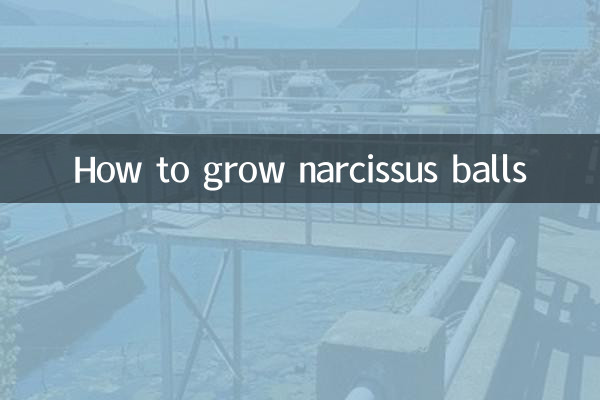How to grow narcissus balls
Narcissus is an elegant and fragrant flower that is loved by people. Growing daffodil bulbs isn’t complicated, but there are some key steps and tips you need to pay attention to. This article will introduce in detail the planting methods of daffodil bulbs, maintenance points and answers to frequently asked questions to help you grow beautiful daffodils easily.
1. Basic information about daffodil balls

Narcissus (Narcissus) is a perennial herbaceous plant of the genus Narcissus in the Amaryllidaceae family, native to the Mediterranean region. It likes a cool and humid environment, is suitable for planting in autumn and winter, and blooms in spring. The following are the basic characteristics of daffodil bulbs:
| characteristic | describe |
|---|---|
| Lighting requirements | Likes full sun, but can also tolerate partial shade |
| temperature range | The suitable temperature for growth is 10-15℃, and the suitable temperature for flowering is 15-20℃ |
| flowering period | Generally from January to March, the flowering period is about 2-3 weeks |
| Reproduction method | Reproduces mainly through bulbs (curls) |
2. Steps for planting daffodil bulbs
1.Choose bouquets: Choose daffodil bulbs that are plump, free from rot, diseases and insect pests. The larger the diameter, the better the flowering effect.
2.Handling bouquets: Peel off the outer dry skin of the flower bulbs to expose the white bulbs, then rinse them with clean water.
3.Prepare container: Choose a shallow basin or a special narcissus basin, pour water into it, and the water level should just touch the bottom of the flower bulb.
4.place bouquets: Place the flower bulbs in the container, making sure the bottom is touching the water, but not completely submerged.
5.place environment: Place the container in a sunny and well-ventilated place, avoid direct sunlight.
| step | Things to note |
|---|---|
| Choose bouquets | Avoid buying moldy or soft flower bulbs |
| Handling bouquets | Be gentle when peeling to avoid damaging the bulbs |
| Prepare container | Containers must be clean to avoid bacterial growth |
| place bouquets | The water level should not be too high to prevent rot |
| place environment | Maintain ventilation and avoid high temperatures |
3. Care points for daffodil bulbs
1.Change water: Change the water every 2-3 days to keep the water clean.
2.illumination: Provide 6-8 hours of light every day to avoid excessive growth caused by long-term darkness.
3.temperature: Keep the ambient temperature at 10-15℃. After flowering, you can move it to a slightly cooler place to extend the flowering period.
4.fertilize: Hydroponic daffodils generally do not require fertilization, and appropriate amounts of phosphorus and potassium fertilizers can be added during soil cultivation.
5.prune: Cut off remaining flowers promptly after flowering to avoid nutrient consumption.
| Maintenance project | Specific requirements |
|---|---|
| Change water | Water quality is clear, no turbidity |
| illumination | Avoid exposure to the sun to prevent leaves from turning yellow |
| temperature | Lowering the temperature after flowering can extend the flowering period |
| fertilize | When cultivating in soil, use small amounts frequently to avoid burning the roots. |
| prune | Cut off dead flowers and dead leaves to keep them beautiful |
4. Frequently Asked Questions
1.Why don't daffodil bulbs bloom?: It may be caused by insufficient light, excessive temperature or poor quality of the flower bulbs. It is recommended to check the environmental conditions and replace the flower bulbs with high quality ones.
2.What to do if daffodil bulbs become moldy?: Immediately take out the flower bulbs, clean and dry them, and replace the water and containers. It is recommended to discard severely moldy flower bulbs.
3.Can daffodil bulbs bloom again?: It is difficult to re-bloom narcissus grown in water. The curds grown in soil can continue to be maintained after flowering and may re-bloom the following year.
4.Are daffodil bulbs poisonous?: The whole narcissus plant is poisonous, especially the bulb part. Avoid eating it by mistake and wash your hands after planting.
With the above steps and care tips, you are sure to successfully grow beautiful daffodils. Happy planting!

check the details

check the details